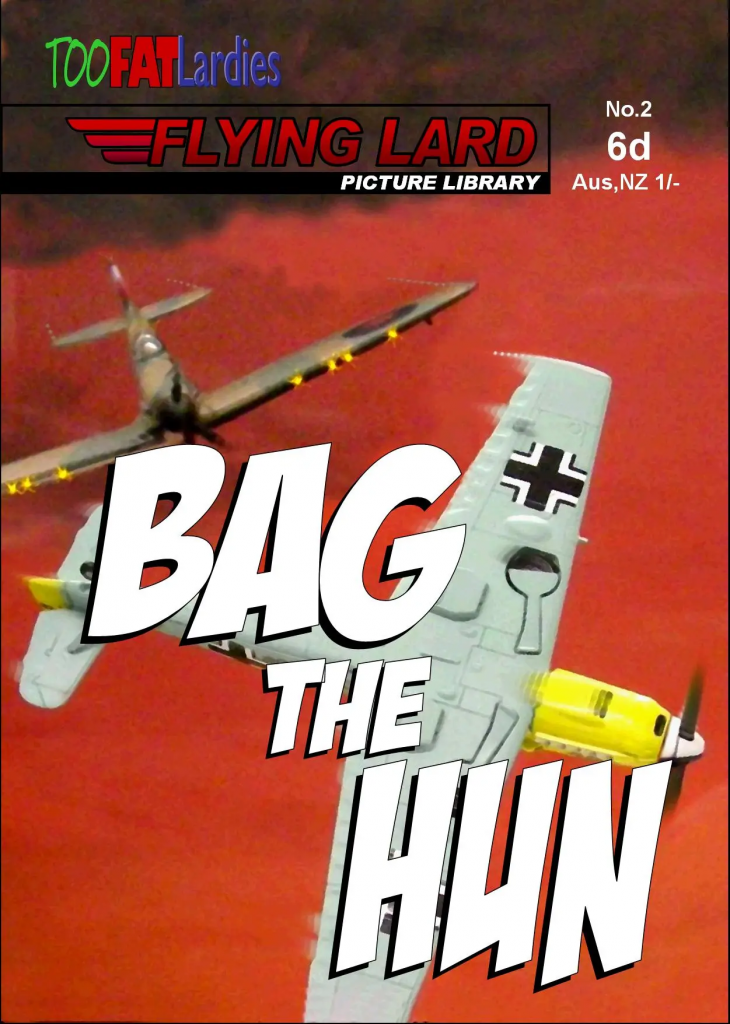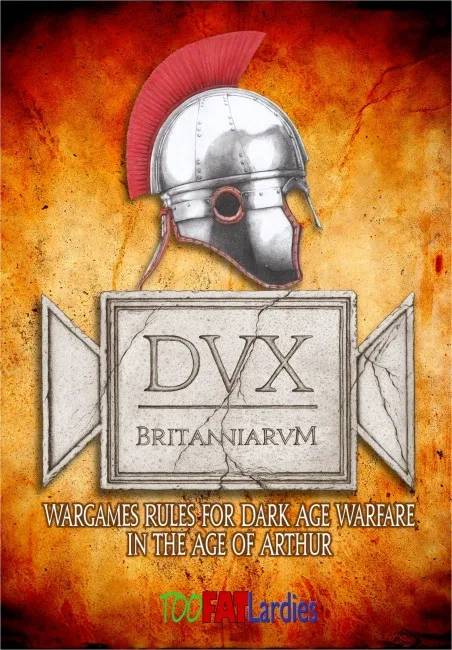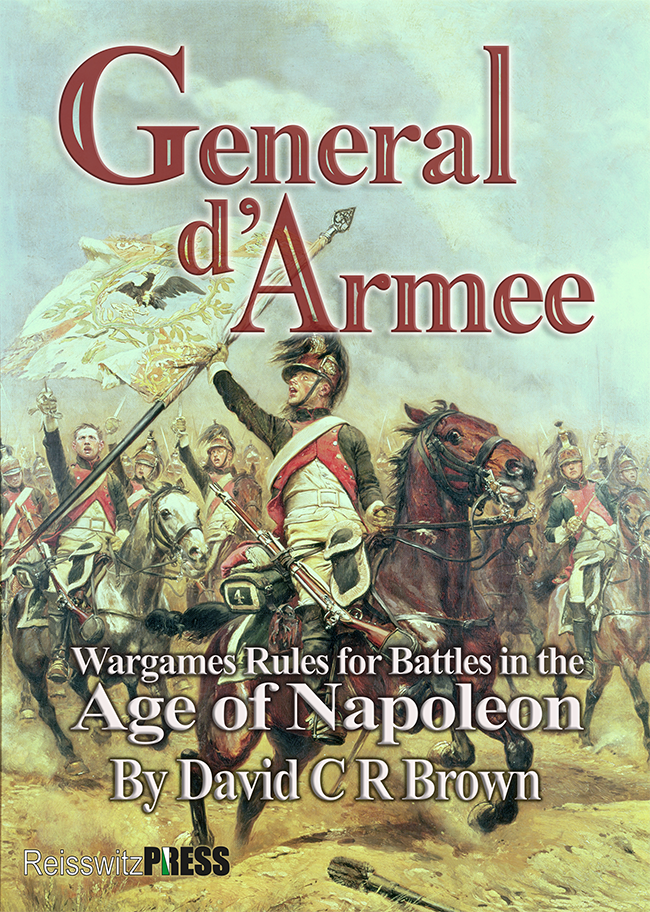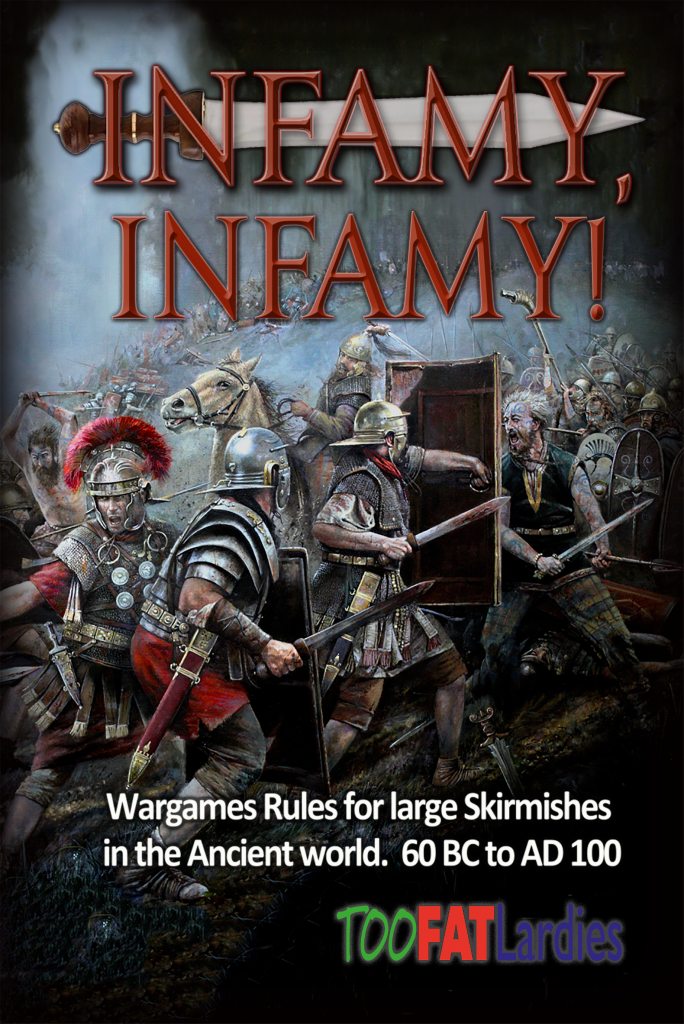
Wargames Twitter is a great place to get inspiration, news, and new techniques to use – but it’s also a fascinating place to find opinion from leaders in the industry. Recently Richard Clarke of TooFatLardies was opining about printing 2nd Editions of rulebooks and I wanted to find out more -Rich was generous enough to provide us a written interview.

Can you walk us through the process of launching a new printed ruleset?
Rich: The primary challenge is design and getting the product right. However, to take a set of rules from playtest to launch is then a very involved process. Obviously, you have to design the game, a process that can take at least a year of fun but also hard work. I find the most fun bit is the very early playtesting when you are doing the blue skies thinking. After that the hard work begins with every idea being tested to destruction. But let’s assume the rules are complete and they land on my desk.
- I re-write the rules. A playtest rule set is a living document that evolves and changes as it is tested and developed. Much of the language within emerges by accident rather than being considered or concise. A huge challenge is to then take what is really a brain dump and turn it into a precise set of instructions whilst avoiding making it a totally dry document.
- Proof reading. Wargamers are very quick to say, “This hasn’t been proofread”. Actually, we go through numerous stages of proof reading to try to avoid that. At present we are working on What a Cowboy which is on the fifth stage of proof reading. Each stage has its specific intent, from the initial discussion and debating of game concepts to thinking about the general order in which the rules are presented. Then there’s the literal discussing each sentence to ensure it actually says what it needs to say, then the checking of spelling and grammar. We have the document proof-read at every stage by UK English speakers, North American English speakers, and English as second language speakers.
- This is critical as a badly presented set of rules is not just unpleasant to read it can also be confusing. It is very important to think carefully about the layout in order to make the content clear. For example, placing examples of play in a text box of a different color makes it immediately clear where the reader can go to. We attempt to present key rules in three ways; in text, with an image and a written example.
- Simultaneously we need to coordinate the commissioning of ancillary items such as cards, tokens and similar. These require their own proof reading and artwork.
- Simultaneously we need to coordinate a marketing campaign which involves taking the game to shows, showing it on social media, getting copy into the hobby press and actually advertising in those magazines.
- When the document is complete (and proof read again) we send it to the printer who produces a printer’s proof for us to sign off before the rules go into production. This sounds like a tick box exercise but is actually critical as it is the first time we actually see what the rules will look like and the very last time we can make changes.
- Once we approve the printer’s proof, we start taking advanced orders. It sounds trivial, but we need to then ensure that we have the correct supply of packaging. Book boxes have soared in price so it costs as over £1.50 to send each order out. That needs to be factored into the calculations as that can easily add £10,000 to the cost of a launch. Finally, we coordinate with the local post office who hire additional staff for the release period which can be up to three days of intense posting.
- We then gear up for the arrival of all of the component parts and ensure we have enough people ready to stuff envelopes and ensure that we have the orders sorted so that it is easy for the Post Office to process them as efficiently as possible.
- After that we work with the game designer to answer any queries and to ensure that additional content is available to assist people playing the game. These could be scenarios, quick reference sheets or similar.
- I’ll add the caveat here that there’s probably something else I have forgotten!

What are the biggest challenges and hardest things to calculate?
Rich: Time. Everything takes longer than you anticipate. Nothing is simple. Every game designer is understandably telling you that their project is what you should be working on. In fact, I have to be disciplined to ensure that I focus entirely on one project at a time to get that completed before moving on to the next one.
What are some of the things that gamers or new writers may not think about?
Rich: Everything. The assumption is that they hand you their completed rule set and you just send it to the printer. Steps 1 to 9 listed above are, they think, your excuses for delaying their project. Preparing a set of rules for publication is a laborious and labor-intensive process which I think comes as a shock to most people when they actually encounter it.

Why are second runs so hard?
Rich: When you launch a rule set you spend X but you also (hopefully) generate income of X+. It’s a new release, people are excited. People have an incentive to buy the rules as an advanced order as they will get the free PDF or a limited-edition figure or similar. When you produce a second print run there is no such incentive. You spend X but there is no commensurate spike in sales to fund that. In retail terms, you are spending money on stock which may well sit on your shelves for a long time.
To be honest, it isn’t the second or third print run that we find challenging, but the fourth or fifth. This is often when a rule set is ten years old and sales are less than hundred units a year. It is likely that it will take you over ten years to sell the minimum print run of 1000 copies and in the meantime, we would be paying for storage space to keep them in stock. It is simply not viable. It’s actually quite sad to see some much-loved rule sets go out of print, but it is a financial reality.
When rules were printed in black and white it was actually easier to keep books in print. The unit cost per book remained constant whether you had 100 copies printed or 10,000. With color printing, the largest cost component is setting up the process (don’t ask me how or why) which means that you have minimum viable print runs of 1000. However, it also creates economies of scale. So, if 1000 copies costs X, 2000 copies might cost 1.5 * X whereas 3000 copies cost 1.7 * X and so on. This is very seductive and means that 10,000 copies really reduces your unit costs to a fraction of what 1000 copies would be.
However, if you don’t sell what you print you are literally left with a pile of books the size of a small house. The challenge is to print enough to keep you in stock for a couple of years but also print sufficiently few so you make a profit. In fact, what profit you make is actually your working capital for the next project. If I fail to make a profit on the current project that actually impacts on the next project as I simply can’t afford to fund it.
The big issue with re-prints is that you have hopefully made a profit on a rule set. When you reprint it you are effectively draining away your working capital with no hope of that being replenished. A few months ago I reprinted three different sets of rules at a cost of £25,000. That makes a severe dent in the bank balance but I do plan for it. With many rule sets being essentially run as a vanity project by their designer, a reprint with no promise of a profit can feel decidedly like a waste of money.

Has the process or availability changed at all since TFL started publishing rulesets?
Rich: Color printing has been the big change as above. When we produced the first edition of IABSM we printed 300 copies for less than £1000. Now we print many thousands of copies and the production costs are anywhere between £25,000 and £40,000.
What are the numbers you’re looking to get to for viability?
Rich: That depends on the rule set but there is no formula. It is literally a case of putting a finger in the wind and making a guess. Viability is all about profit. If you launch a rule set and, after the dust settles, you have more in the bank than previously then you are winning. That allows you to fund the next project. If you launch a rule set and, after the dust settles, you have the same in the bank than previously then you haven’t lost. Your working capital is still intact. Indeed, with some rule sets that have a niche appeal this is precisely my objective. In both of the above situations, that allows you to fund the next project. It’s when you have less money than you started with that you are in trouble.
One thing wargamers often don’t take into consideration is that the cost of a set of wargame rules is not about the cost of printing and production, it’s also about funding the development process. For example, when designing a set of rules, I may well spend thousands of pounds on figures and terrain. It may take me a year or more to develop the game and during the time I will be travelling to visit battlefields and doing other research. All of these are hidden costs that needs covering.

How much do you think promotion of new rulesets has an impact on numbers for the original run? Things like YouTube, WSS, showing the rules at wargame shows, etc.
Rich: YouTube is, I believe, the most important medium. Done properly, it allows people to try before they buy. I try to make the videos we produce more factual than marketing hype. I want people to see what they are getting. Wargames shows certainly help but you have a limited audience. I think that taking a game I development around the shows is a great way to test your ideas and see what people think about the game. Magazine articles are good as they do help spread the word. Magazine advertising is, I feel, the least measurable in terms of ROI. Nobody ever says “I ordered because of your advert” whereas they do tell you they played the game at a show.
Can you share any specifics on something like run size for some of the more popular sets you’ve published, maybe versus what you started out with at TFL? How many do you try to keep on hand after the original rush?
Rich: As I mentioned, you’re comparing 300 copies of IABSM as opposed to 8,000 copies of Chain of Command or Infamy. That’s initial print runs. Sharp Practice has sold over 60,000 copies in the two versions. Chain of Command has had over a dozen print runs. However, a resupply print run can be as small as 1000 and usually not more than 3000 copies.

Have you considered using a print-on-demand site like WargameVault where players can purchase a PDF of the rules and then also have it printed and sent to their house?
Rich: Yes, I’ve considered it. No, I won’t do it. They take far too large a slice to make it viable. Whilst wargaming is my hobby I have to treat the business as exactly that and things have to stack up financially. There are lots of companies out there who will print and bind your PDF for you, so me selling you the hard copy or PDF seems like the most sensible approach. There is a huge financial difference between you buying a set of rules directly from me and you buying it through a reseller. Buying directly from the publisher really helps to keep us viable as a business.
Can you talk a little about miniature and terrain photography for your rulebooks? Have you learned to do it, and if so, how, or do you have associates do it for your rulebooks? What about illustrations and maps?
Rich: Get a good camera. Get the lighting right. That’s all there is to photography really. The skill is in composing a good scene; something evocative or something that works well with the text. Sometimes I take the photos, sometimes people do it for me.
Maps, I try to pay someone else to do. Same with artwork. I try to use people to do what they are good at and enjoy. We have a policy of establishing long-term business relationships with our suppliers and contractors and that allows us to work with them, to discuss their ideas as well as ours and hopefully get the best end result.

Do you think there is anything else to tell us that we may not have asked about?
Rich: Not particularly. Publishing rule sets is a very involved process and also combines a degree of financial risk. We try very hard to work with game designers during the design process to help them get the best possible product. I think that involvement and our ability to provide advice and assistance sets us apart from the general run of the mill publisher who probably only has a vague understanding of wargaming let alone game design. I get involved in the playtesting, I am not shy to tell people my honest opinion, but I am also not trying to tell game designers that everything should be “Lardy”. That’s why I set up Reisswitz Press so we can publish games which have nothing Lardy about them but which are great games.
Besides the above topic, what’s on the horizon for TFL?
Rich: It’s a busy year. COVID is still having huge knock-on effects for us. We published Infamy during lock down which was great in that it was a huge launch with record sales, but gamers were unable to take the game to their local club and get playing, which is what any rule set needs to do well. As a result, we decided to not publish anything else during lock-down. Of course, that didn’t stop people developing rule sets, so we now have a huge backlog.
What a Cowboy is next followed by Midgard from the pen of James Morris. We have a set of Cold War rules in development, a large Black Powder game, the second edition of General d’Armee, Part Two in the Infamy trilogy and the Far East Handbook for Chain of Command along with the whole Market Garden Pint Sized Campaign set. To say I am snowed under is not an understatement. What I am really short on is time to play games and think. That’s something I need to address. It’s not possible to be creative when under that degree of pressure. The big challenge for me is getting the balance right between the productive part of the job and the creative bit.
Thanks for the interview, Rich! We really appreciate your time and this in-depth look into the economics of wargame design.
Have any questions or feedback? Drop us a note in the comments below or email us at contact@goonhammer.com.


